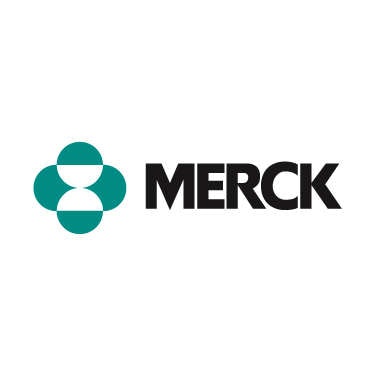The healthcare sector has been known for paying dependable dividends and producing strong total returns over time. Among the major pharmaceutical companies, there are a few that stand out as most financially sound, as reflected by their CDS spreads below those of the U.S. Treasuries.
This is the second part of our list; the first section included Bristol Myers Squibb Co. (NYSE:BMY), Eli Lilly & Co. (NYSE:LLY), and Johnson & Johnson (NYSE:JNJ).
Why use CDS spreads?
A credit default swap is essentially like a form of insurance, that two parties can swap between one another for protection against default. When we talk about CDS spreads, we simply mean the amount of “protection” the buyer most pay the seller for taking on its risk of a debt default. The spread is denominated as the percentage of the face value that makes up a CDS’s premium. The lower the spread, the lower the premium, and less risky a buyer is. Searching for low CDS spreads is one method investors can use to parse the market down into companies with the lowest risk profiles.
Merck & Co., Inc. (NYSE:MRK), the world’s third-largest drugmaker, pays the highest yield among the six featured stocks. Its current yield is 67 basis points below its five-year average yield. Like its peers, Merck & Co., Inc. (NYSE:MRK) has also experienced a fall in revenues and profitability due to its patent cliff, as its once-biggest selling drug, Singulair, for the treatment of asthma, lost its exclusivity in 2012. However, going forward, the company’s revenues will be supported by the sales of Merck’s other drugs and treatments, including Januvia, Janumet, Gardasil, and Isentress. Merck & Co., Inc. (NYSE:MRK)’s long-term growth potential is significant, based on a slew of new treatments, including those for osteoporosis (Odanacatib), atherosclerosis, thrombosis, and hepatitis C virus.
The company also has a new product under review for insomnia (suvorexant), which could have blockbuster potential. This month, FDA designated Merck’s experimental cancer drug lambrolizumab a “breakthrough therapy,” implying fast-track development and review. Merck & Co., Inc. (NYSE:MRK) is attractively valued, boasting a forward P/E of 13.2x and a price-to-book at the lower end of its historical valuation. The company has paid dividends since 1969. Last quarter, Adage Capital held more than $150 million in Merck. It’s always important to track hedge fund sentiment, because it can beat the market by 18 percentage points a year.
Novartis AG (ADR) (NYSE:NVS) a Swiss multinational drugmaker, also offers an attractive yield that is about 30 basis points above the company’s average over the past five years. Novartis AG (ADR) (NYSE:NVS) is pursuing a robust pipeline of new drugs to mitigate the anticipated sales drop due to generic competition for some of its top-selling drugs, such as antihypertensive treatment Diovan and cancer treatment Femara.
By 2017, the company plans to release 14 or more new blockbuster drugs to treat cancer, heart, and respiratory diseases. Its advanced breast cancer drug Afinitor, also approved for kidney and lung cancer, could hit sales of $2 billion within five years. Among the promising new treatments is also Novartis AG (ADR) (NYSE:NVS)’ LDK378 compound, which the U.S. FDA recently designated a “breakthrough therapy” for the treatment of a type of non-small cell lung cancer.
Among the not so flattering developments are two recent civil-fraud lawsuits filed against Novartis AG (ADR) (NYSE:NVS) for giving discounts and rebates to pharmacies and multimillion kickbacks to doctors who prescribed its drugs. Novartis AG (ADR) (NYSE:NVS) is trading at 14.5x forward earnings. The stock is popular with billionaire Ken Fisher.
Pfizer Inc. (NYSE:PFE), the world’s largest pharmaceutical company, currently pays a dividend yield that is 117 basis points below the company’s five-year average yield. This is so because of a cumulative 44% gain in its stock price over the past five years. Following patent expiration for Lipitor in 2011, sales of this cholesterol drug that once were as high as $13 billion have been plunging. Its atypical antipsychotic drug Geodon also saw lower sales following patent expiration in 2012. Still, strong performance of pain drug Lyrica has been making up for some of the revenue losses.
Recently, Pfizer Inc. (NYSE:PFE) revised lower its outlook for 2013 to reflect the impact of the weaker Japanese yen and the Zoetis IPO. Still, a positive development is the FDA approval of Pfizer Inc. (NYSE:PFE)’s two new potential blockbusters, the anticoagulant drug Eliquis and the rheumatoid arthritis drug Xeljanz. Pfizer Inc. (NYSE:PFE) has a pipeline of 78 products, including 17 products in Phase III trials and seven in registration. In terms of valuation, the stock is trading at 13.4x forward earnings. Last quarter, Tiger Cub hedge funder Rob Citrone was bullish about Pfizer Inc. (NYSE:PFE).
Final thoughts
While the past few years have been tumultuous for earnings of many drugmakers, due to steep patent cliffs, the situation has started to improve. What’s more, many pharmaceutical majors boast strong product pipelines, with potential blockbuster drugs in the making that have a potential to lead to ample cash flows in the future.
Disclosure: none

